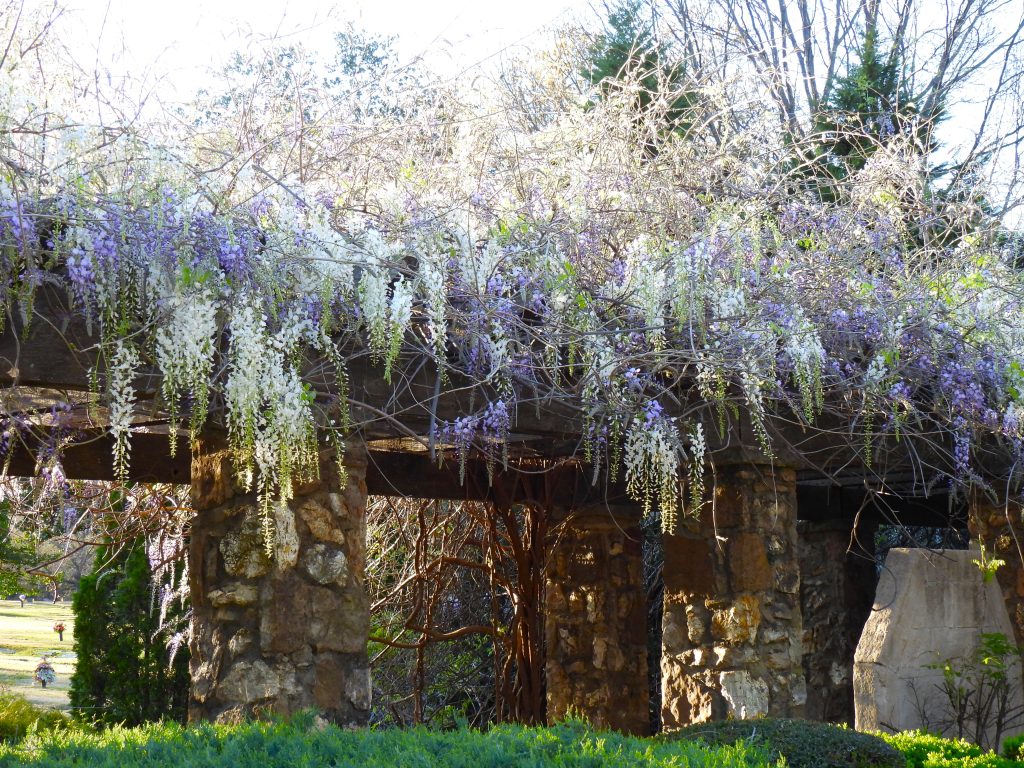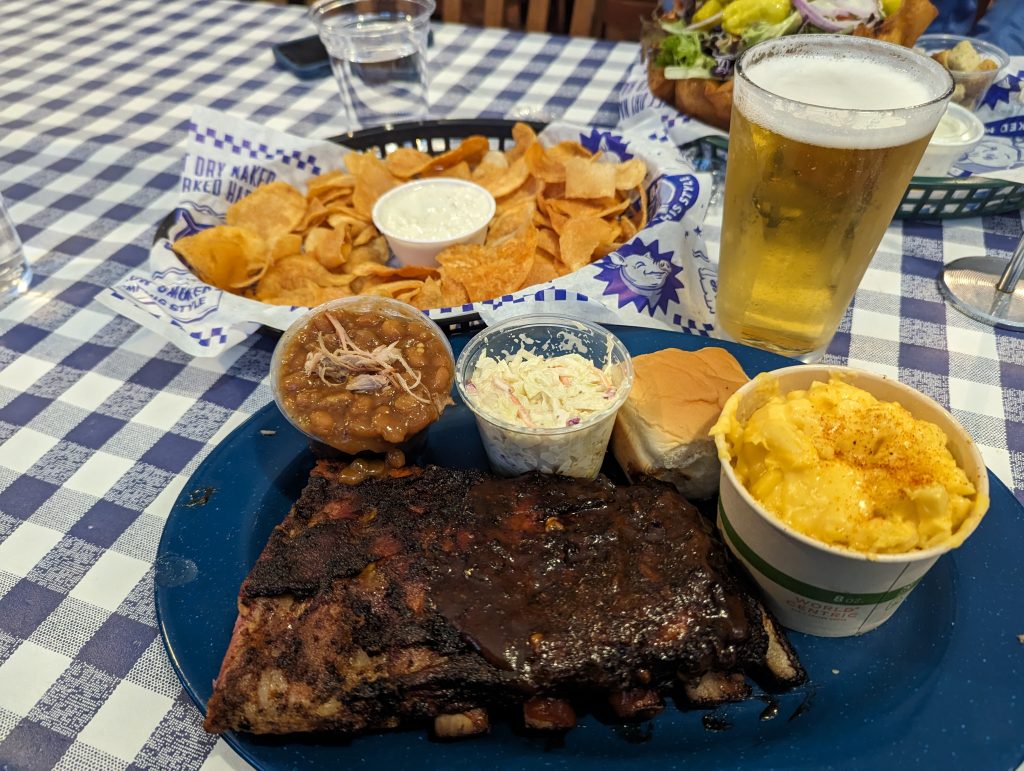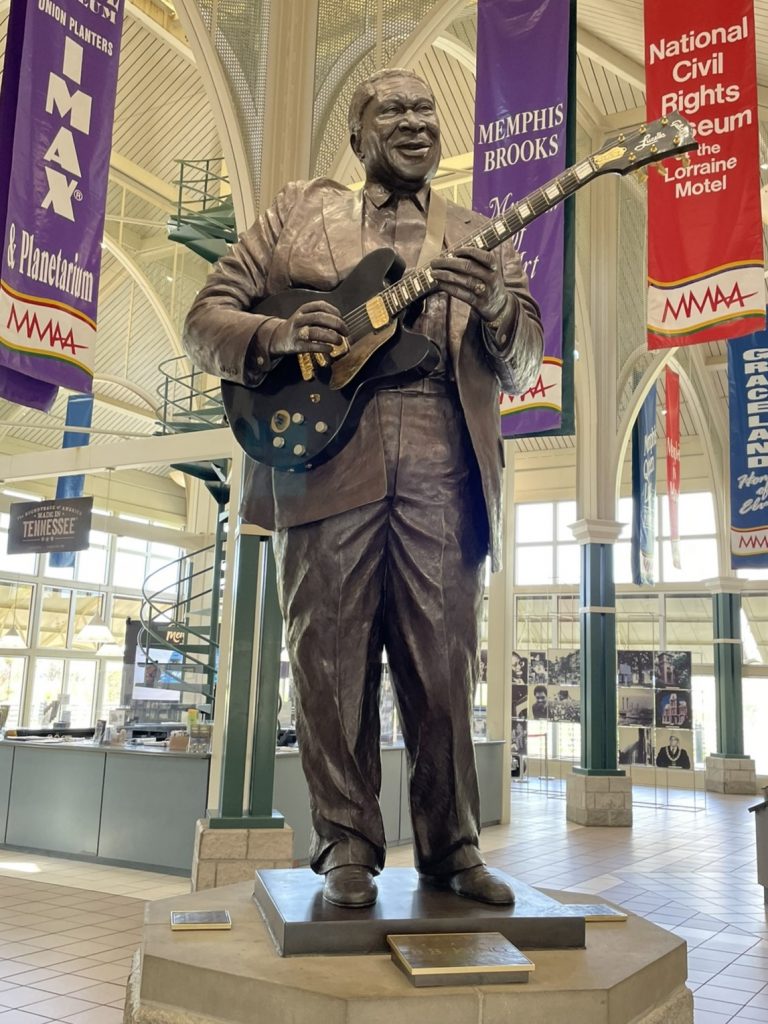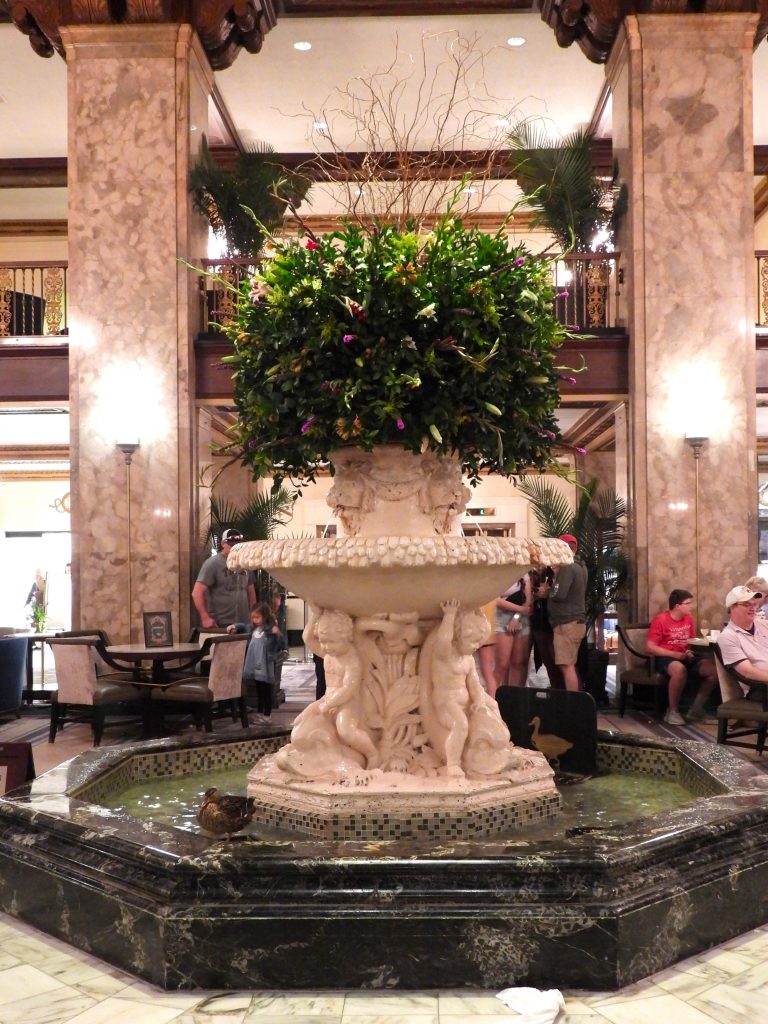
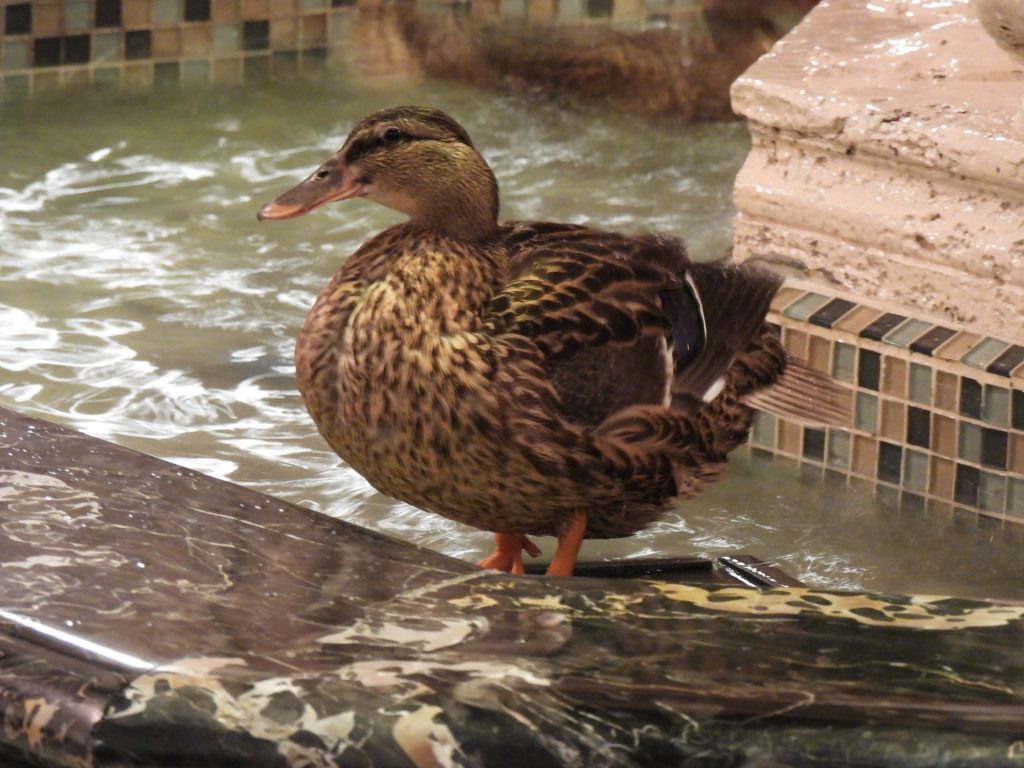
At the opulent Peabody Hotel, there are a handful of ducks living the dream.
Supposedly, back in the 1930s, some duck hunters released a few live ducks in the hotel’s fountain in the lobby. They were a big hit with the guests, and it eventually turned into tradition and major daily event.
Each day the ducks are ceremonially escorted from their palatial rooftop duck digs, down the elevator, and into the fountain at 11 a.m. At 5 p.m. the process is reversed.
We are here to tell you that it is a frenzied hour, with people everywhere clamoring for a good spot. We arrived early, which meant standing and holding our view for nearly an hour. The “show” was drawn out and the experience was overall not nearly as much fun as I thought it would be. It was also too dark inside for good photos. But it’s a thing that people are supposed to do when they’re in Memphis, and so we did it.
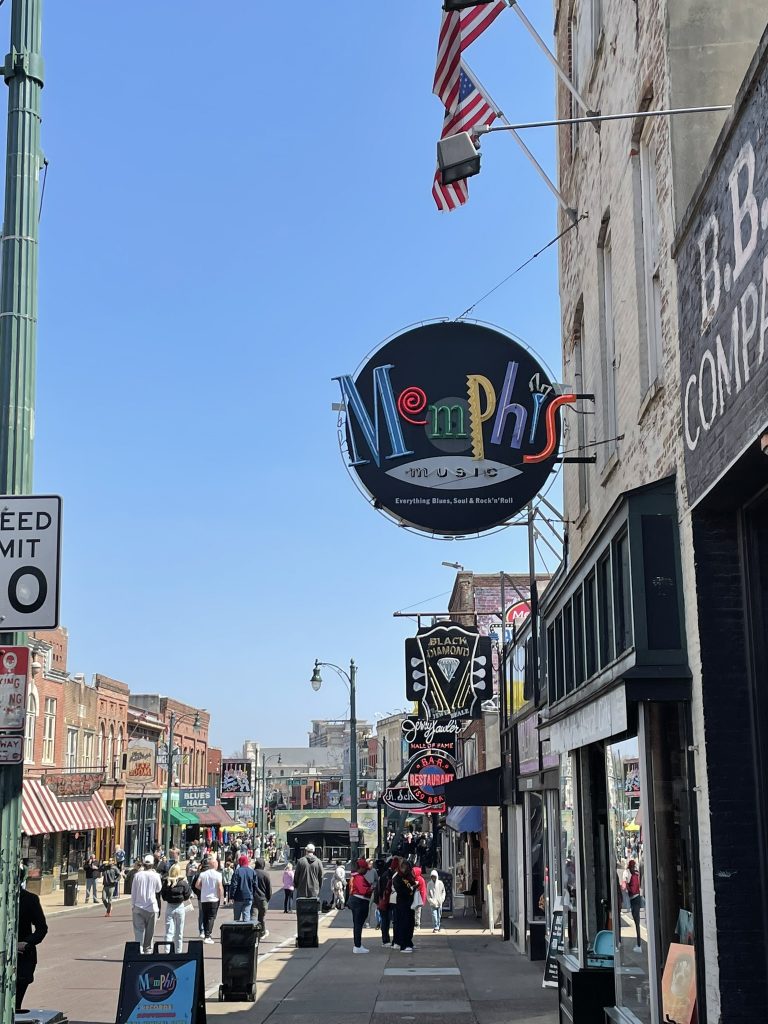
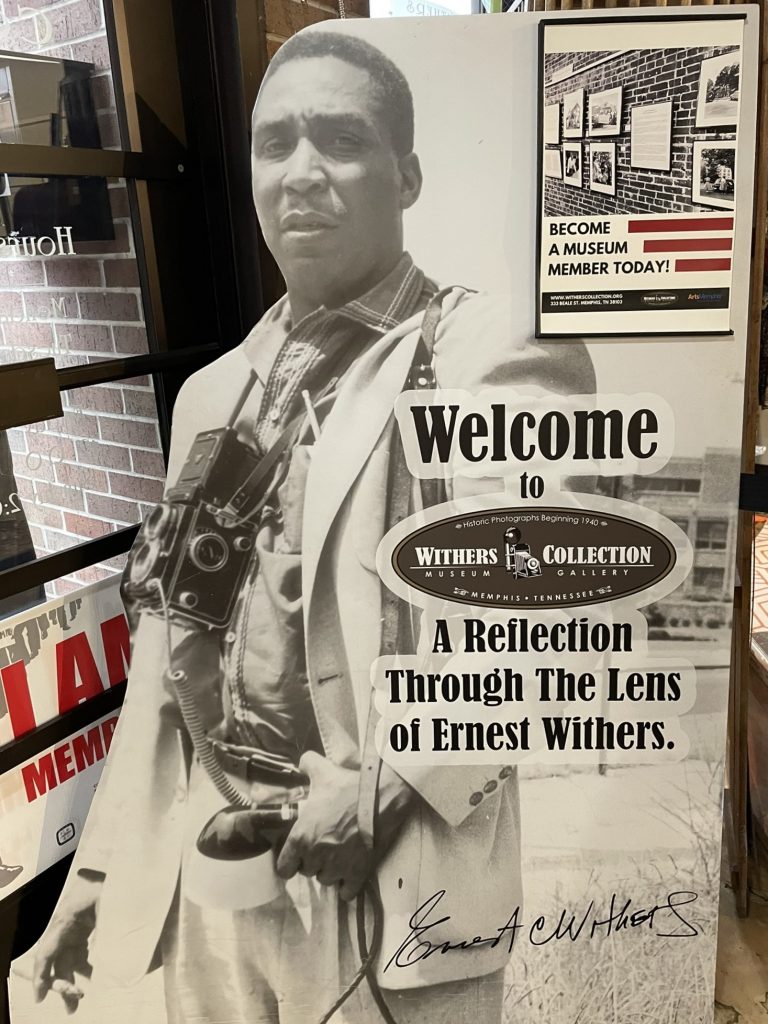
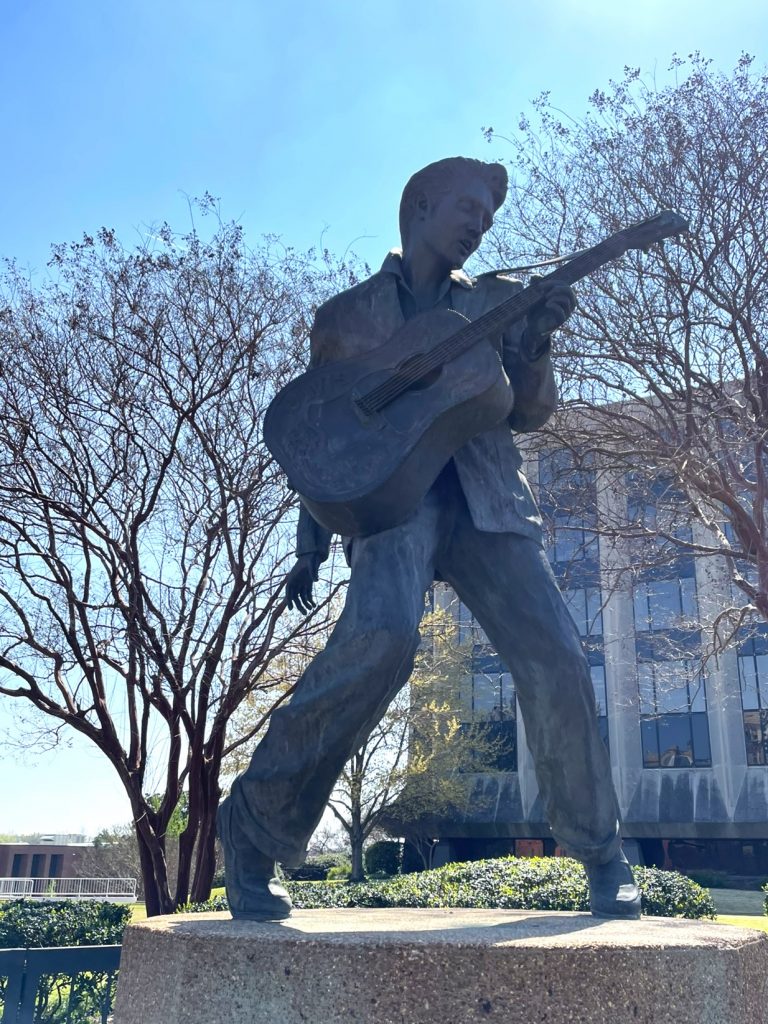
Beale Street is a historic location in Memphis, making it both iconic and touristy at the same time. It’s considered the “birthplace of blues,” with musician and “father of the blues” W.C. Handy writing Beale Street Blues in 1917. It was also important in the Civil Rights movement, with many businesses owned by African Americans in the early 1900s. Ida B. Wells also based the anti-segregationist newspaper Free Speech on Beale Street.
It was relatively quiet during our two visits there, but even then, police were everywhere and we did witness one footchase with officers running down the street. You could sense how even more chaotic it would be during busier times.
A highlight was a stop in at the Withers Collection, featuring the amazing moments in Civil Rights history captured by Ernest C. Withers (1922-2007). Photos were not allowed in the gallery, but his works can be viewed on their website. There are so many amazing photographs, many of which you would recognize, including the one of Mose Wright standing in court and pointing out the men who abducted his great-nephew Emmett Till.
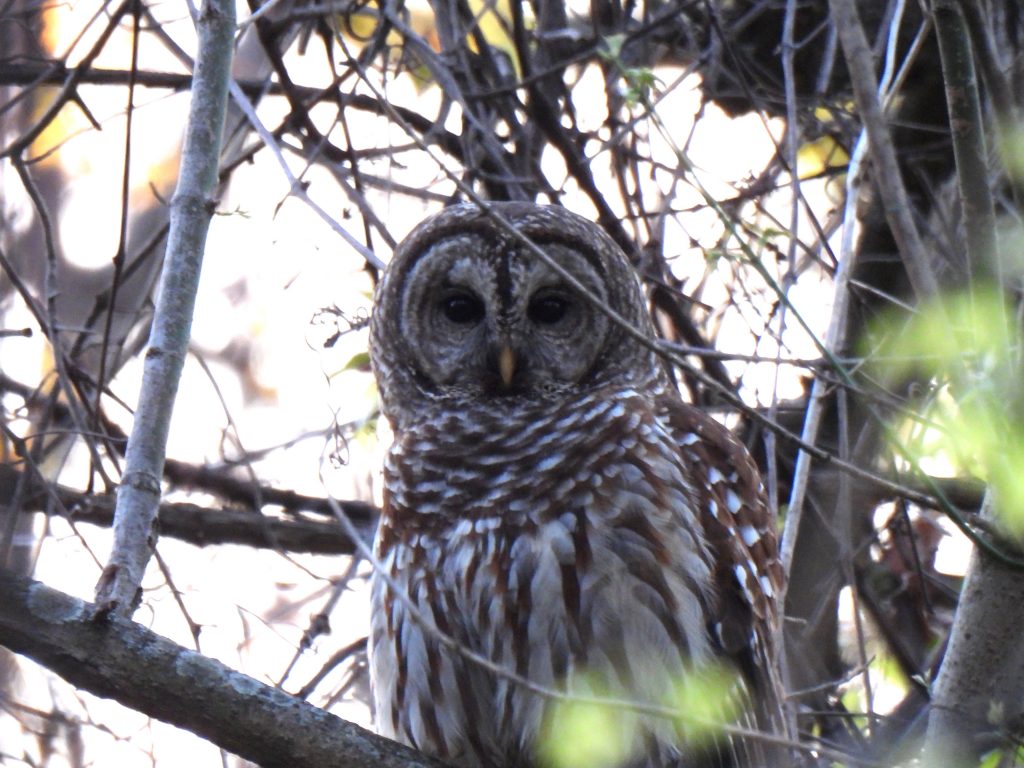
We went to Overton Park specifically because we hoped to see a barred owl. We were about to call it a day when we heard the distinctive hooting and turned around to follow the trails in the direction of the call. And wouldn’t you know but we actually found one! We were both giddy with excitement. He was relatively close and we got a great look at him — and you can see he got a great look at us, too!
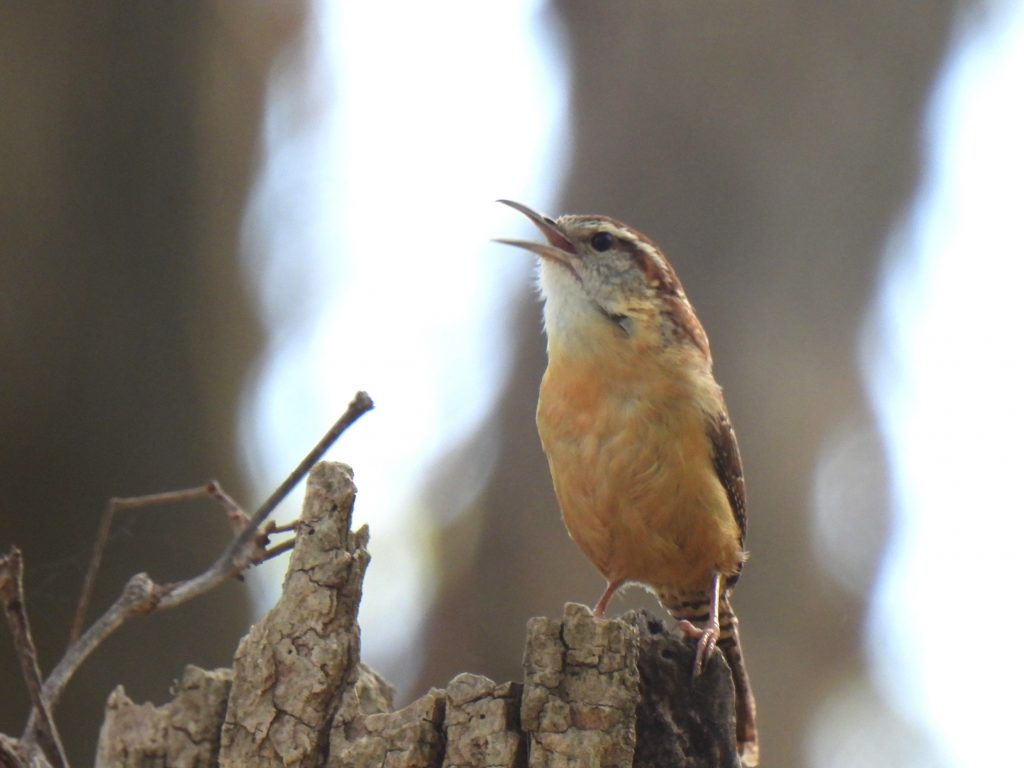
This Carolina Wren was singing up a storm by our campsite, when Doug realized that it and a mate were building a nest in a hole in a tree just a few feet away. We watched them both gathering twigs, leaves and moss. Very neat! We have already learned that it’s possible to hear Carolina Wrens singing on just about every birding excursion, but spotting them in the trees and brush is another matter altogether.
The Stax Museum of American Soul Music was a bit underwhelming after some of the other music sites we saw in Memphis.
It sits on the former location of Stax Records, but sadly that building is long gone. The new building’s front was constructed as a replica of the prior building, which preserves the historical feel of the site.
Stax was integral to the careers of artists such as Otis Redding, Isaac Hayes, Carla Thomas, and many more.

The only surviving piece of Stax Records is this tile mosaic, which has been incorporated into the new building.
This 24-karat-gold-plated Cadillac was leased for Isaac Hayes as part of a lavish contract he negotiated during the heyday of his career.
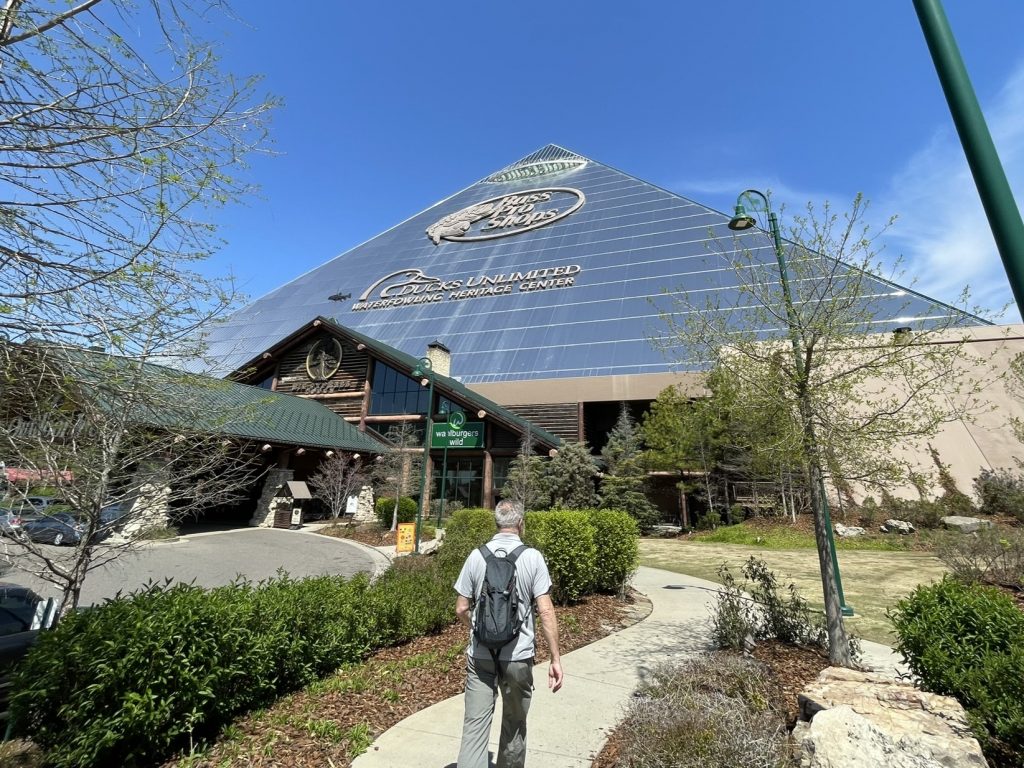
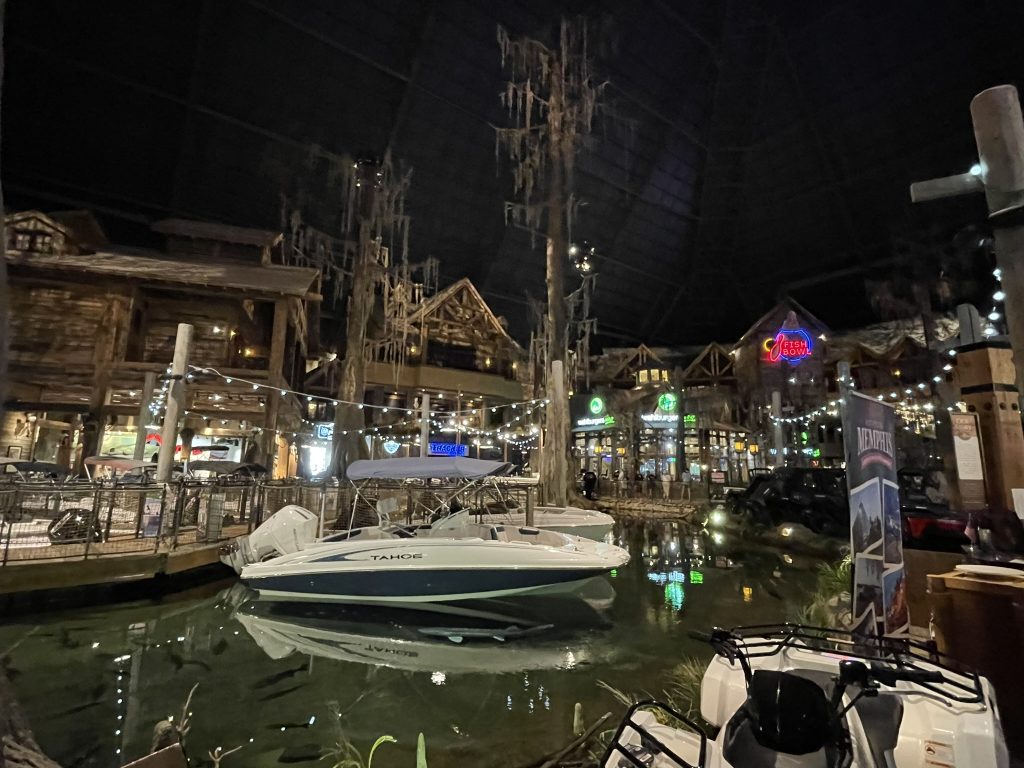
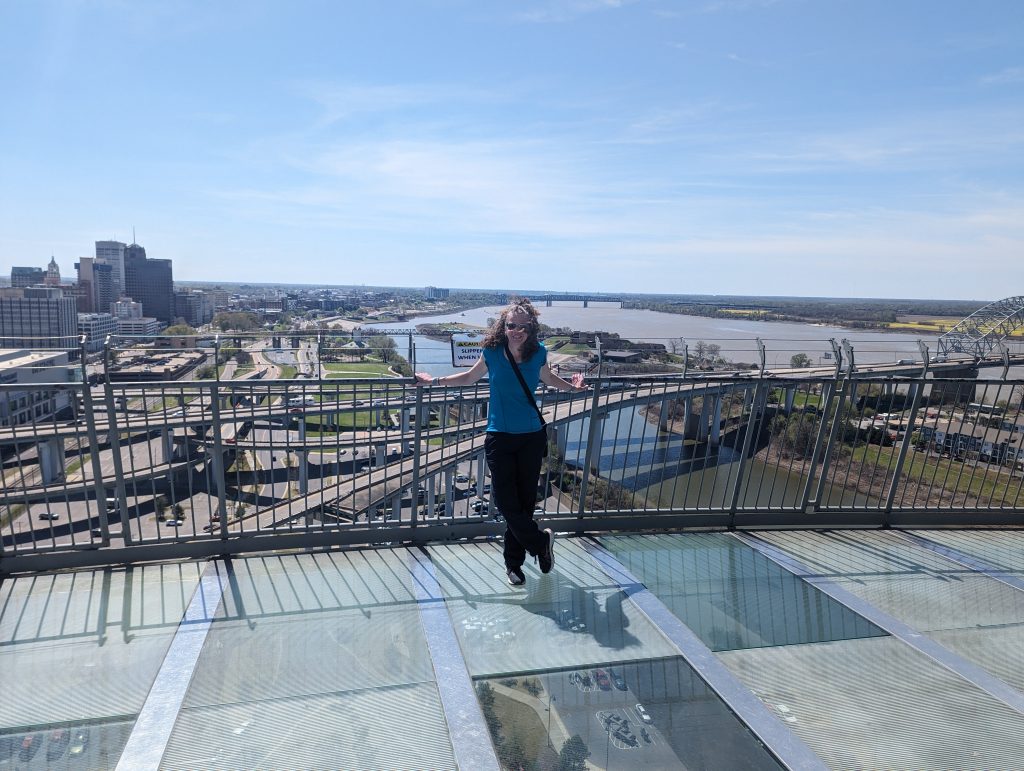
The Bass Pro Shop at the Pyramid has managed to turn their retail store into a destination. The 321-foot-tall Pyramid building was originally built as an arena hosting sporting and music events, opening into 1991. After its NBA Team, the Memphis Grizzlies, relocated to a different arena, financial difficulties fell upon the pyramid, and it sat vacant for several years.
Eventually Bass Pro opened a megastore inside, including a hotel, restaurants, bowling alley, archery range, live alligators, and more! You can ride the tallest freestanding elevator in America (for a fee of course) to the top to a restaurant and exterior viewing platforms. Doug loooooooves a view, so of course we did it — even though only one of us was comfortable stepping to the edge of the glass-floored balcony.
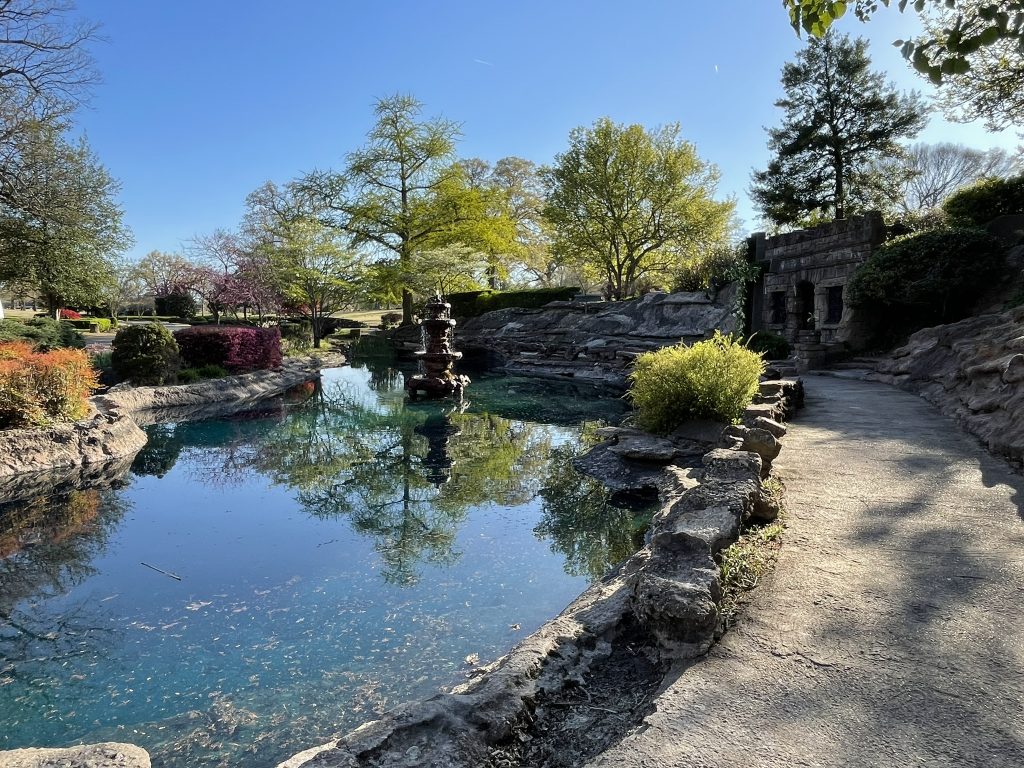
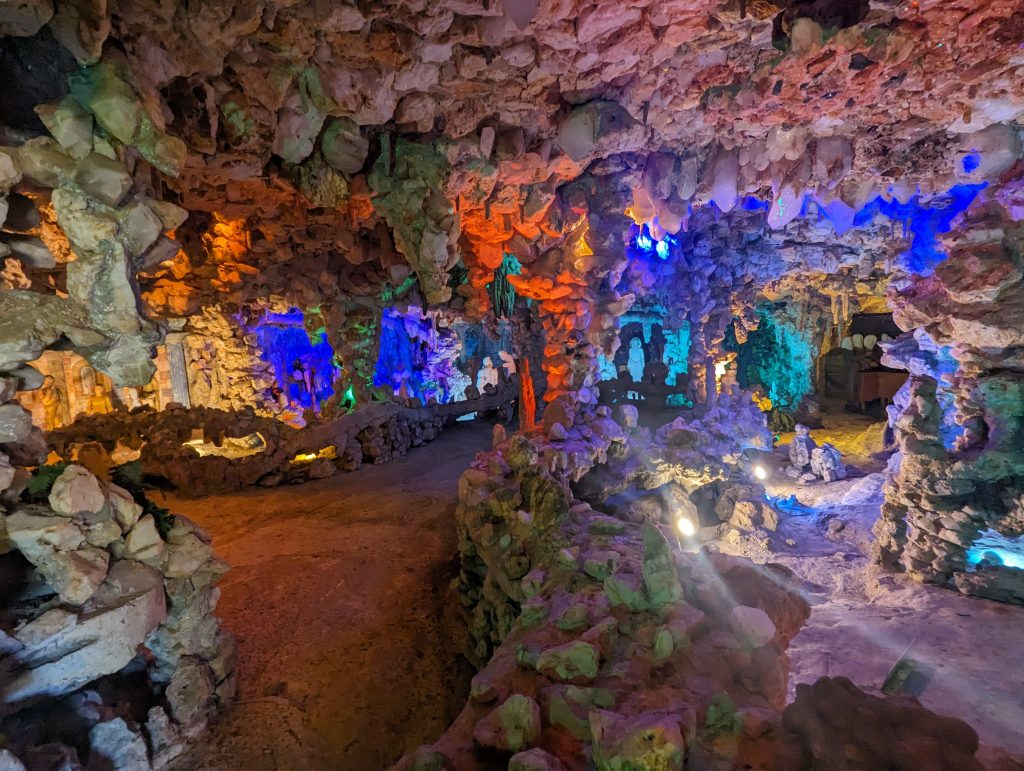
We went to Memorial Park –– yes, a cemetery! –– to see the “only man-made crystal cave in the world”, the Crystal Shrine Grotto. E. Clovis Hinds was inspired to build a premier cemetery that would be beautiful and peaceful. He put a lot of effort into transforming the landscape, hiring Mexican Artist Señor Dionicio Rodriguez to construct many sculptures around the park. Rodriguez was a master in the style of art known as trabajo rustico (“rustic work”), pieces made from cement molded but to look like wood.
Hinds asked Rodriguez to build the shrine to tell the story of Christ inside. Hinds built an extensive interior and exterior shrine, with local artists creating the sculptures telling the stories inside. It’s a bit of an oddity, to be sure, which is why we were there, of course. We also walked around the cemetery some, doing some birding, naturally.
